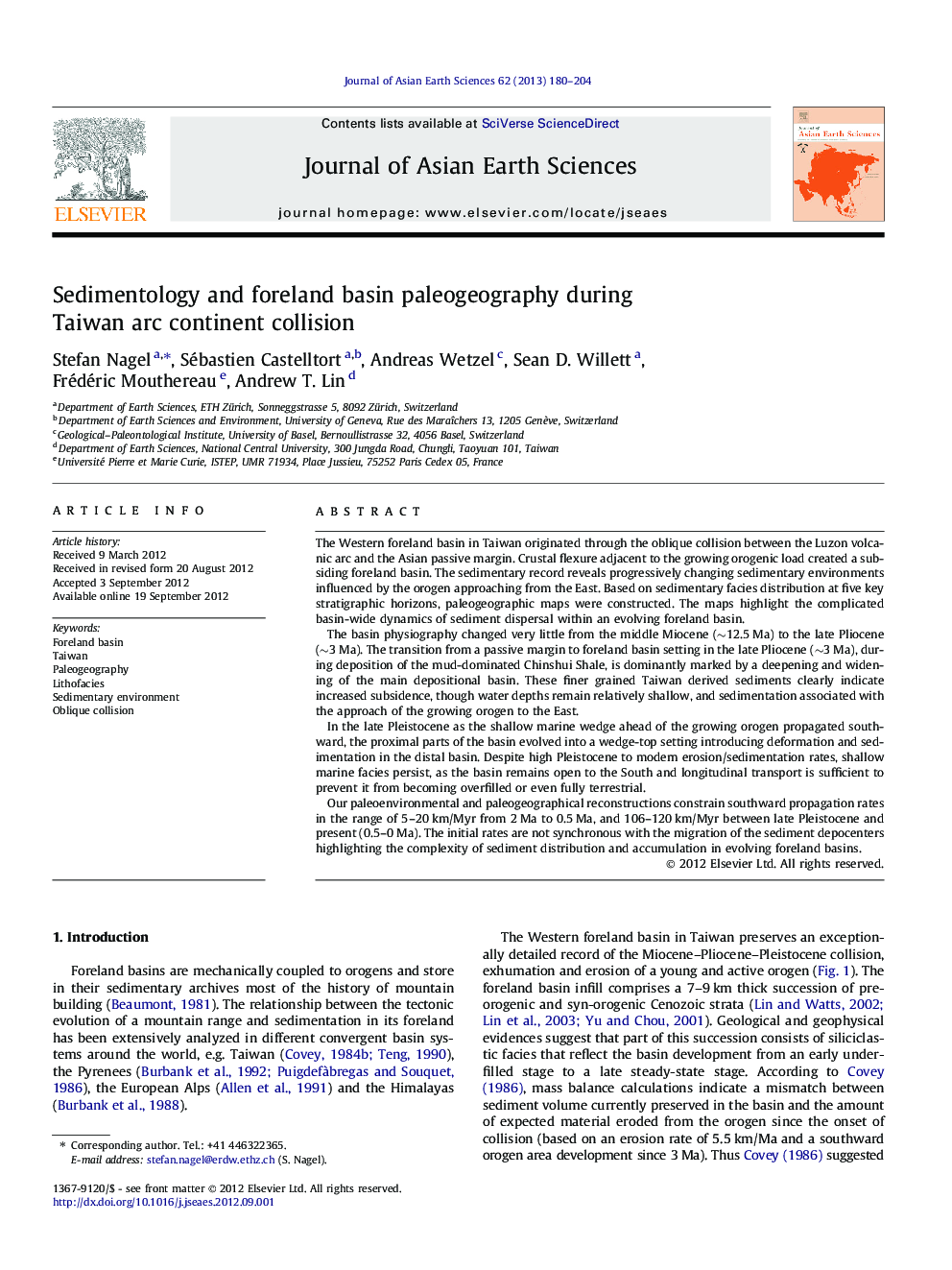| کد مقاله | کد نشریه | سال انتشار | مقاله انگلیسی | نسخه تمام متن |
|---|---|---|---|---|
| 4731269 | 1640403 | 2013 | 25 صفحه PDF | دانلود رایگان |
The Western foreland basin in Taiwan originated through the oblique collision between the Luzon volcanic arc and the Asian passive margin. Crustal flexure adjacent to the growing orogenic load created a subsiding foreland basin. The sedimentary record reveals progressively changing sedimentary environments influenced by the orogen approaching from the East. Based on sedimentary facies distribution at five key stratigraphic horizons, paleogeographic maps were constructed. The maps highlight the complicated basin-wide dynamics of sediment dispersal within an evolving foreland basin.The basin physiography changed very little from the middle Miocene (∼12.5 Ma) to the late Pliocene (∼3 Ma). The transition from a passive margin to foreland basin setting in the late Pliocene (∼3 Ma), during deposition of the mud-dominated Chinshui Shale, is dominantly marked by a deepening and widening of the main depositional basin. These finer grained Taiwan derived sediments clearly indicate increased subsidence, though water depths remain relatively shallow, and sedimentation associated with the approach of the growing orogen to the East.In the late Pleistocene as the shallow marine wedge ahead of the growing orogen propagated southward, the proximal parts of the basin evolved into a wedge-top setting introducing deformation and sedimentation in the distal basin. Despite high Pleistocene to modern erosion/sedimentation rates, shallow marine facies persist, as the basin remains open to the South and longitudinal transport is sufficient to prevent it from becoming overfilled or even fully terrestrial.Our paleoenvironmental and paleogeographical reconstructions constrain southward propagation rates in the range of 5–20 km/Myr from 2 Ma to 0.5 Ma, and 106–120 km/Myr between late Pleistocene and present (0.5–0 Ma). The initial rates are not synchronous with the migration of the sediment depocenters highlighting the complexity of sediment distribution and accumulation in evolving foreland basins.
► We apply detailed stratigraphic analysis in the Western foreland basin in Taiwan.
► Between ∼12 and 2 Ma the basin paleogeography remains relatively unchanged.
► The proximal–distal facies trend is reversed to the SW since ∼2 Ma.
► Southward propagation rates are 5–20 km/Ma from 2 to 0.5 Ma, and then 106 to 120 km/Ma.
► Typhoons may be underestimated in their importance on the stratigraphic record.
Journal: Journal of Asian Earth Sciences - Volume 62, 30 January 2013, Pages 180–204
